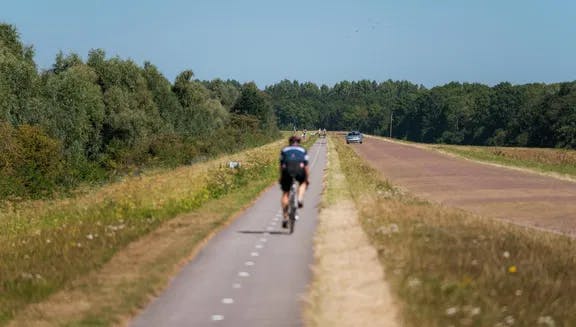
New Land Cycleseeing Route: Lelystad's wildlife and seabeds
7 April 2025
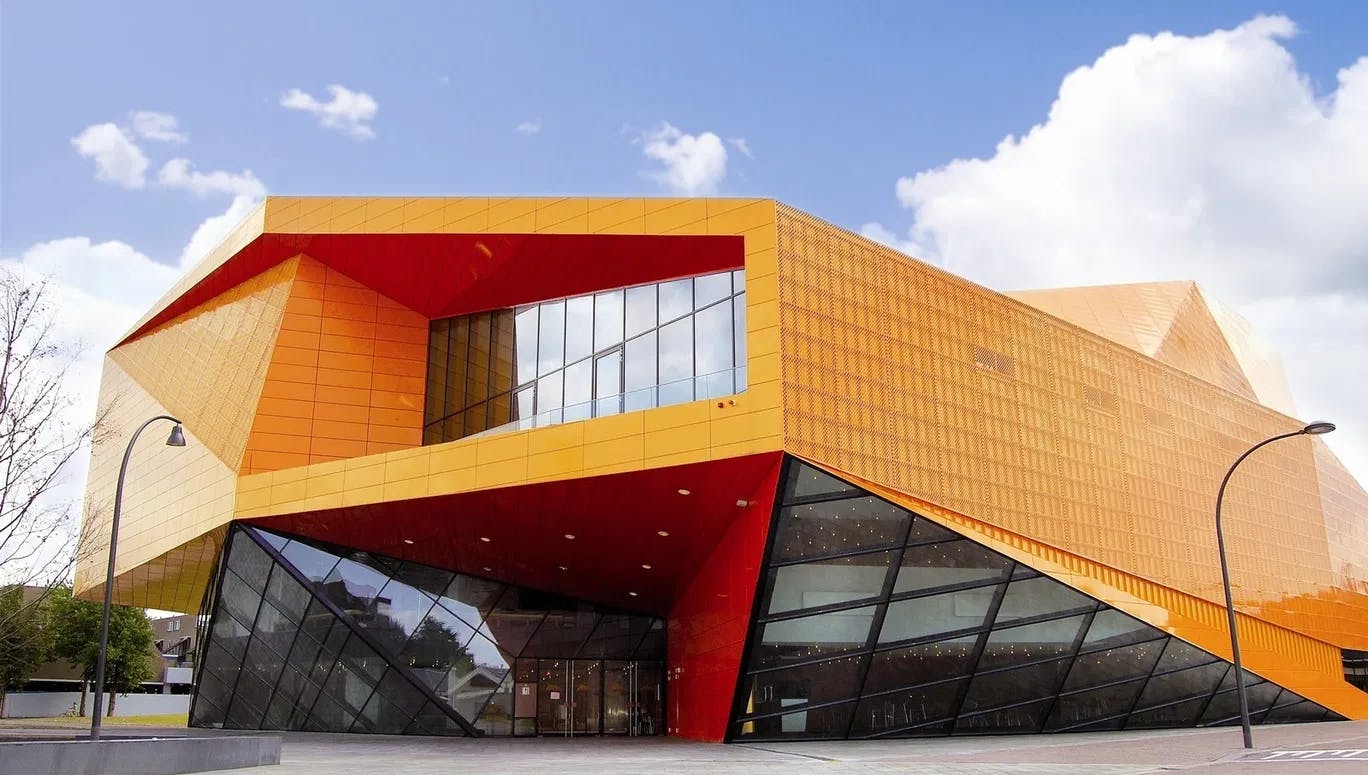
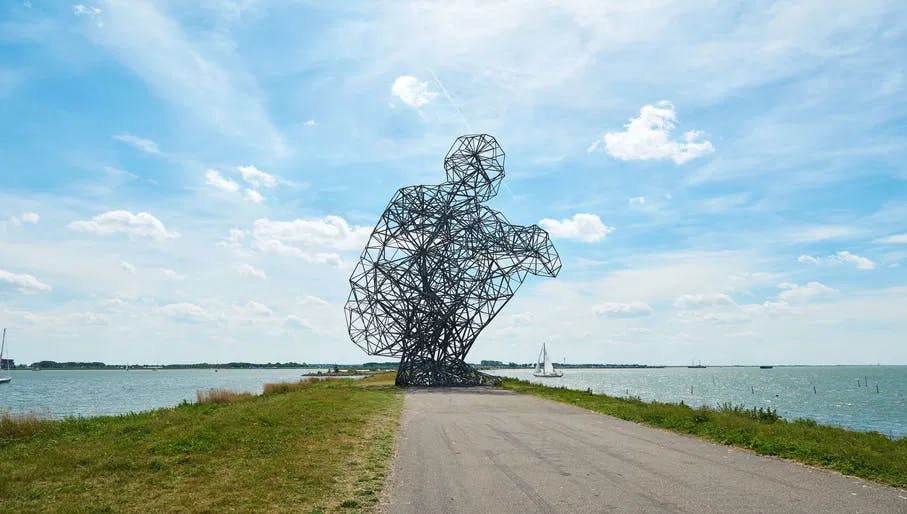
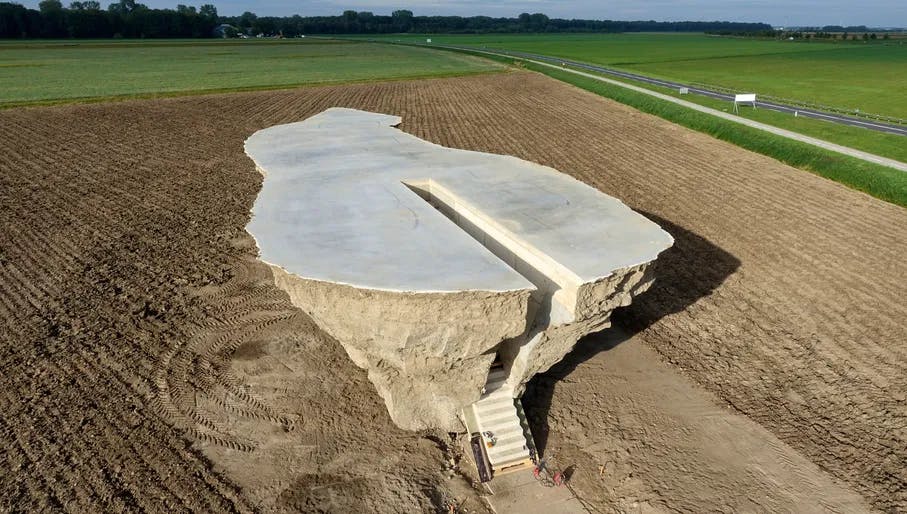
New Land is home to some epic examples of the art movement known as land art. These works by internationally renowned artists were influenced by the newness of the landscape. Nine pieces of incredible land art are scattered across the polder: travel to Lelystad to see world-famous artist Antony Gormley’s Exposure, a 26-metre-tall structure of metal beams in the shape of a crouching man. Or, just outside Almere, check out Marinus Boezem’s The Green Cathedral - a formation of 178 poplar trees, modelled on the Gothic cathedral in Reims - and Daniel Libeskind’s Polderland Garden of Love and Fire. You can tour all the works in a day if you’re travelling by car, and guided tours take place all summer with special events during Land Art Weekend in June.
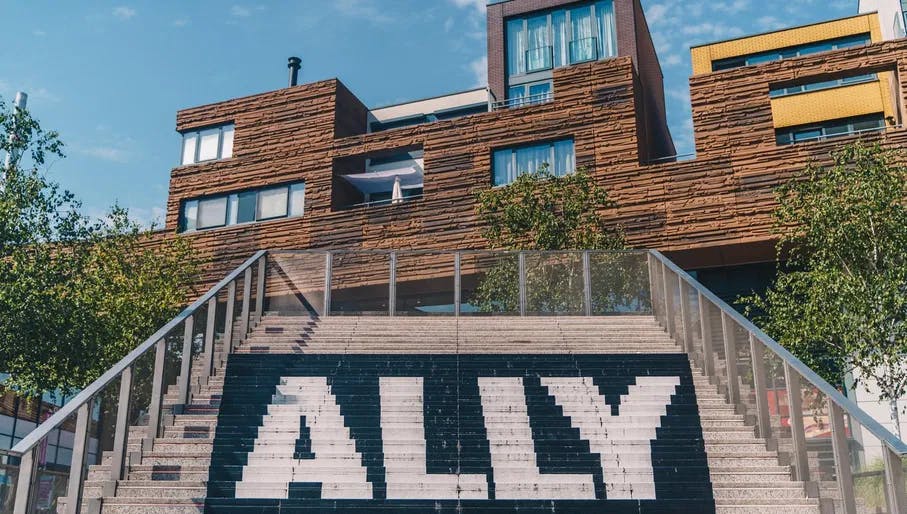
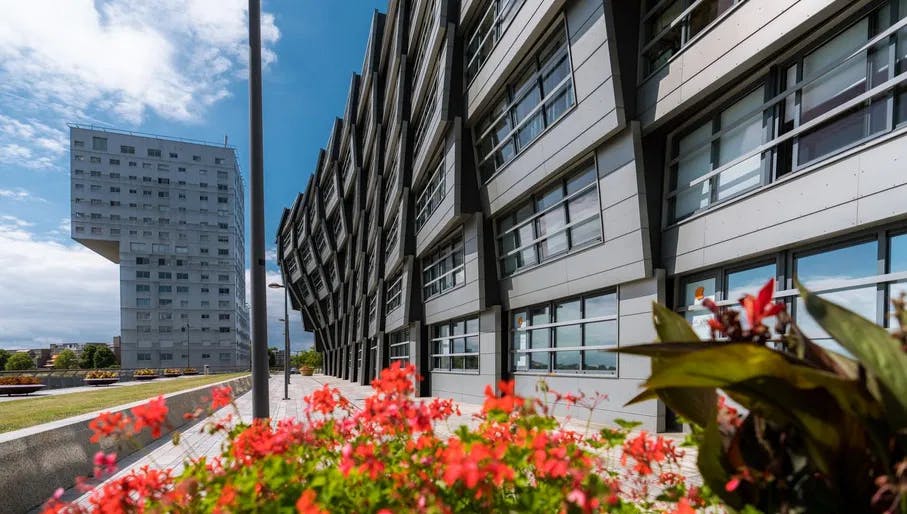
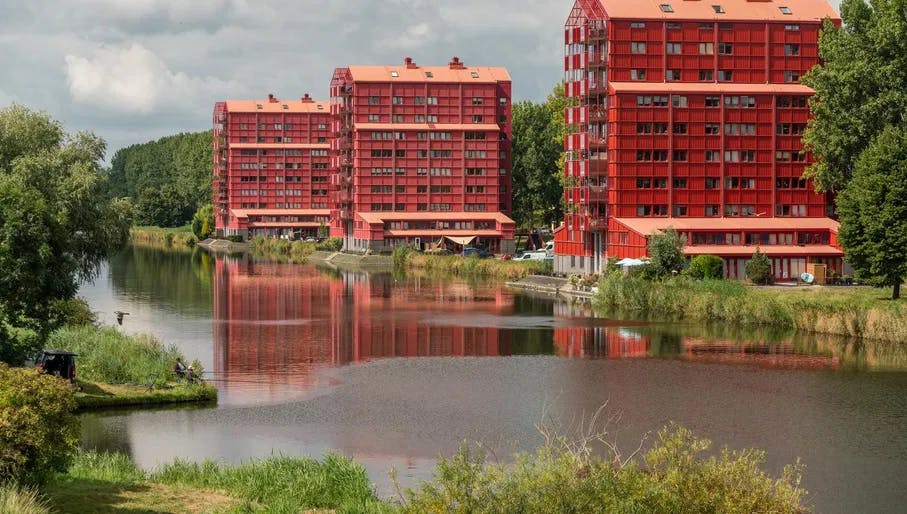
New Land's modern skylines elegantly fuse modern design with elements of nature. In Almere, you will find work by many world-famous architects, including the undulating designs of Rem Koolhaas and his firm OMA, who conceptualised the pedestrian-friendly planning for the city centre. Don't miss The Wave by René van Zuuk - a seven-storey building which starts as a rectangular block at one end, but the front heaves outwards at the other end in the shape of a wave, as if the building itself is moving. Discover all Almere’s architecture and street art - such as the iconic ‘Ally Stairs’ by Kamp Seedorf - with a guided tour or a walking tour flyer from VVV Almere. Alternatively, join the Discover Almere Photography Tour for an interactive audio guide led by photographer Richard Terborg. Or check out this map of all of Lelystad's new street art murals.
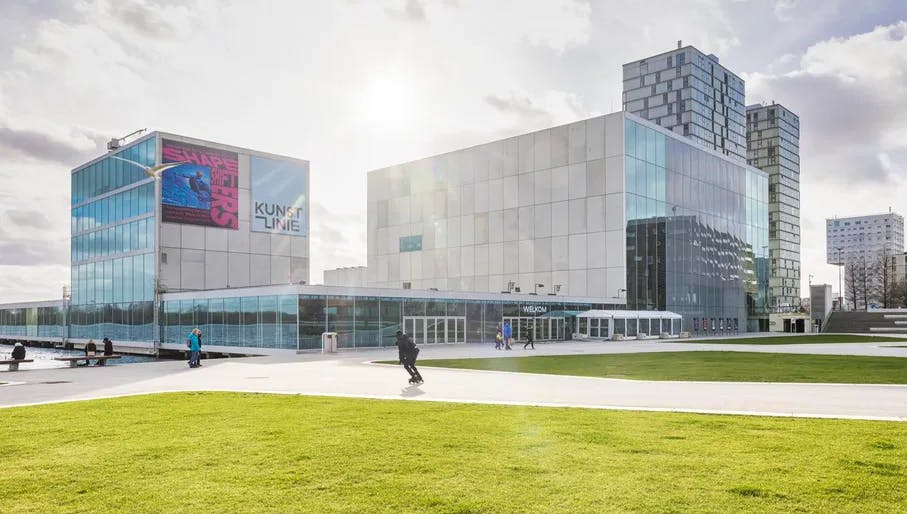
The Kunstlinie Theatre juts out over the Weerwater Lake in a dramatic horizontal slice where the impressive glass facades reflect the water and fill the building with light. Despite the austere, blocky shapes, the combination of materials and the suspended base create a sense of lightness. The theatre was designed by Japanese architects Kazuyo Sejima and Ryue Nishizawa. Inside, the stage is taken over by everyone from dance and theatre companies to pop singers, jazz bands, comedians, cabaret acts, and touring musicals, so keep an eye on the agenda for the complete programme. There’s also an adjacent arts centre with changing exhibitions, workshops and tours led by the artists in residence.
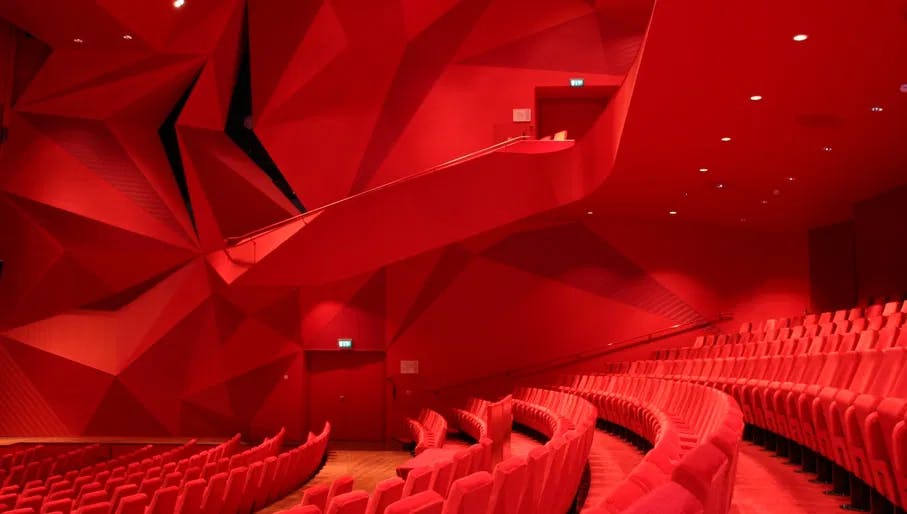
The attention-grabbing Agora Theater is located in a bright orange building designed by Ben van Berkel in the renovated city centre of Lelystad. Inside you’ll find a theatre and congress centre which form the city's cultural heart. On the agenda, you’ll see a colourful lineup of comedy, avant-garde theatre, cabaret, stage shows and music nights. Restaurant Applaus, located within the building, is perfect for pre-theatre fine dining or a delicious lunch on the sunny terrace.
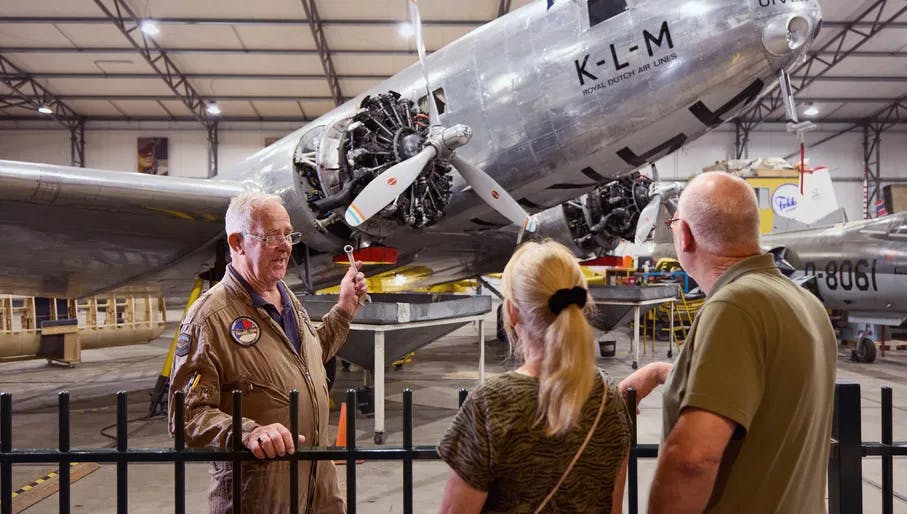
Covering 6,000 square metres, the Aviodrome museum covers all aspects of aeroplanes and the development of flight – from the Wright Brothers’ first successful aircraft to the enormous Boeing 747. Outside, visitors can even explore a 747, gaining an exclusive peek into parts of the plane that are usually off-limits. Investigate the science of flight in the aeroplane laboratory and head to the 4D cinema to catch a film about aviation on the country’s largest film screen! Events and exhibitions are organised at the Aviodrome throughout the year. Look out for special programmes during the school holidays.
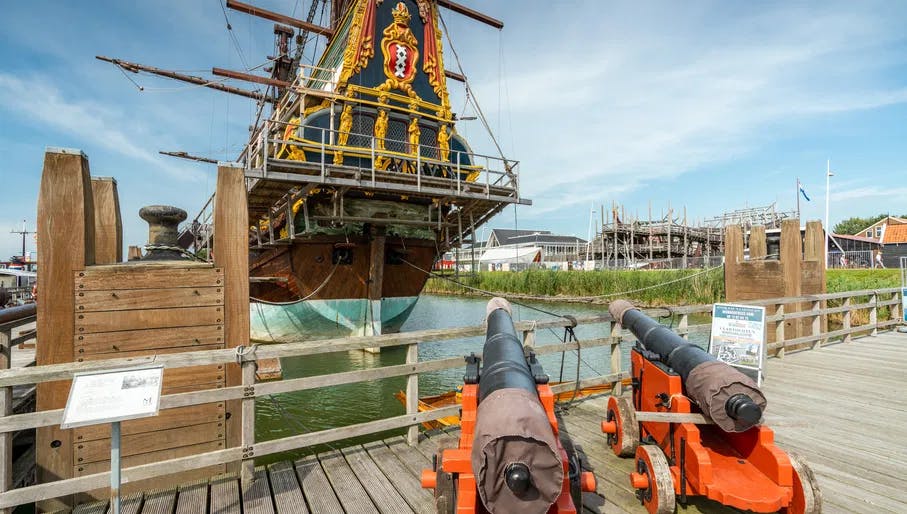
Take a journey spanning 7,000 years of Dutch history at Batavialand. The shipyard shows how the Dutch have mastered shipbuilding over the centuries, building robust ships that were capable of traversing Dutch and international waters. Climb aboard the famous reconstruction of the VOC ship, the Batavia, and find out how these powerful 17th-century trade ships were constructed. Visit the museum and discover stories about the life of a Dutchman, forever living on the boundary between water and land. A limitation that has defined the nation.
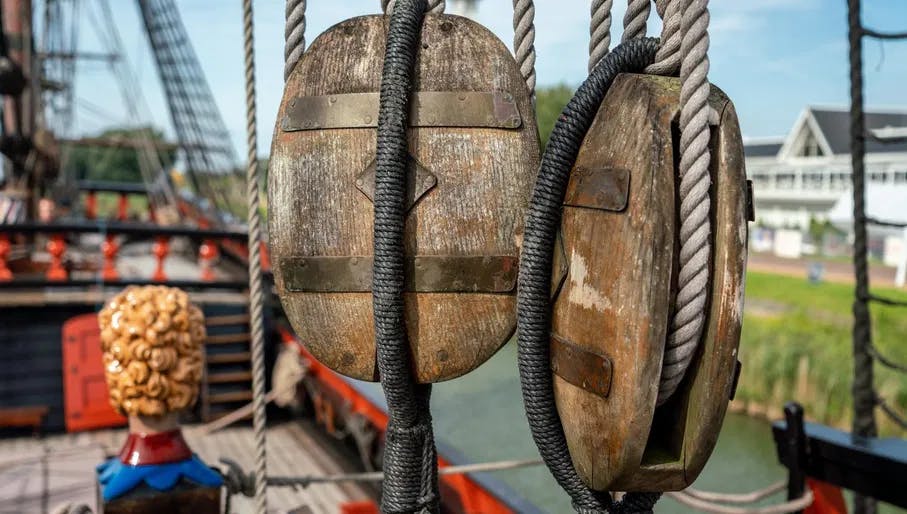
Presenting a broad outline of the history of Flevoland, from the prehistoric Swifterbant people to the largest reclamation project ever: the Zuiderzee Project. The collection within the Batavialand Museum includes 6,000-year-old archaeological finds from when Flevoland was still an extensive marshland, as well as archives with thousands of photographs, documents and much more. There’s plenty for children to do, including presentations that let them step into the shoes of a dyke builder, archaeologist or lock keeper. Fun experiments and games teach them about one of the Netherlands’ key challenges: water management.